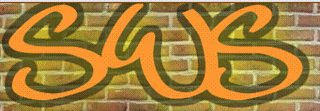The scene is set at last. After years of waiting we have finally moved into the new school. It is with some trepidation that some of the staff will come into school on Tuesday for training on their new Interactive Whiteboard (IWB). I too am nervous, I am keen for the new technology to be embraced and utilised but having not had an IWB before it is a bit of a culture shock for most of my colleagues. To this end I am just hoping to give them a walk through the board, one or two ideas and then the chance to play. The following day the school will be operating normally and I am keen that the children 'interact' with the board as soon as possible.
So I have my ideas, and some links to share but following the success of
@dannynic and his literacy blog posting I set up an
Etherpad and asked for input from the Twitter community. The resultant ideas for IWB's are not my own work but the postings of: @simonhaughton,
@twowhizzy and several others who did not leave a name. Thanks for your input on this and it is this collaborative capability that makes social networking an ideal tool for educators.
WORKING WITH AN IWB
===================
As a starter, make sure they all understand how to align their board so that it can be interactive when touched and that they realise (if its a Smart Board) that the pens & rubber have to be put put back properly into their holders.
Also, make sure that they are are aware of a couple of health & safety points:
* Don't look directly at the light beam (there's been lots in the news about the dangers of this - e.g.
http://news.bbc.co.uk/1/hi/education/6253410.stm)* Don't forget to turn the projector off - many a time I've seen a dark screensaver come on an then the user forget that something is still being projected.
* Clean the lens filter regularly so that the bulb doesn't get overheated.
* Use the spotlight tool to highlight areas of the screen.
*Similarly use the screen shade to hide/reveal things that are on the screen
* You can write on the IWB at any time, such as to annotate things on a website or pause a video and label things you can see in the frame
WOWY ACTIVITIES
===============
A game to consider for instant effective use and class interaction
http://www.kwarp.com/portfolio/grammarninja.htmlThe whiteboardblog is a great resource for tips and tricks
http://www.whiteboardblog.co.uk/guides/Some games where children have to reach around the board pressing lots of different things are always fun - see:
http://www.active-maths.co.uk/games1/splat/index.html or
http://www.oswego.org/ocsd-web/games/SpeedGrid/Multiplication/urikamultires.htmlThree of my favourite sites with links to LOTS of games/activities on are
www.ictgames.com,
www.learningclip.co.uk and
www.topicbox.co.uk They usually come in handy if I'm struggling to find an interactive activity on a particular topic.
For big timers to display on the IWB there's www.online-stopwatch.com/ and
http://www.fieryideas.com/ (this also has other interactive bits on it like marble jars and advent calendars)
Using Smart Notebook
Hide and reveal techniques are really useful Post on my blog
http://twowhizzy.blogspot.com/2007/02/bad-dog-exploring-hide-and-reveal.htmlRub and reveal place an object or a text element on a page, and using digital ink from the pen tool, cover areas of the screen. These can be erased to reveal either elements of an image gradually to support prediction, vocab development. or within a text to help predict words or phrases etc.
In maths this technique is quite handy during modelling sessions. eg prepare a calculation and example models away from class masking areas with "digital ink". These areas can be revealed (by rubbing away)as part of the modelling process to show the method and calculation beneath, but also to help review student predictions around what might be there as process evolves (AfL). I also use this to support talk for reasoning.
magic box
Uses layering on the notebook to help sort and classify. Eg a collection of calculations might be presented, or an odd one out type of quiz. Those objects that obey a certain rule will go into the box be hidden by an object. Those that don't obey the rule will appear out side of the box. Magic box is made by creating a set of objects to sort and an object to be the box/mask/screen. 0bjects that obey the rule are sent to the back, those that don't are brought to the front. The box/mask is placed on the middle layer.
White on white
is a favourite tool of mine, a coloured shape is placed on a contrasting coloured background. A number of text objects are created, and then recoloured to hide them against the central object eg if shape is white the text is coloured white. Pulling these out onto the contrasting colour say black, makes them visible again.
Science - set up experiment grid - variables can be labelled in boxes, and these boxes can be noved according to which variable will be changed, and which will be kept the same -like whiteboard sticky notes.
Coins onto a hand from the gallery would be good for KS 1.
Create mood page - with photo(s) and sound file(s). Create mood in classrooma and annotate page with vocabulary - good for scene setting in narrative writing, or empathy in history.
Younger children tracing handwriting letters from gallery onto whiteboard - 'Big' handwriting.
Already mentioned hide and reveal
Smart Gallery has a huge collection of Clip Art images and interactive resources (e.g. number squares, dice etc.) that can be dragged onto a slide to enhance it. Agree here I really like the dice for random calcualtion generators. Use the images to replace shapes in some of the hide and reveal activities, "hungry bear only eats.... Hungry bear becomes the magic box.
Just remembered that there's a presentation on Ideas to Inspire about IWBs - see
http://www.ideastoinspire.co.uk/interactivewhiteboards.htmhttp://magazines.scholastic.co.uk/content/1069 is a good link with 10 tips aimed at early years children
@wigglemyears flash games -
http://www.kented.org.uk/ngfl/games/ are a fantastic set of resources for foundation and Key Stage 1 children.
So loads of links and ideas which I will share with my colleagues (probably a bit at a time!)
Visualisers next........





















